Before detailing our design team’s thoughts on the future of workplace design, it’s important to note it’s imperative to firstly gain a thorough appreciation of your current workplace, including any performance gaps to ensure your next workplace supports all employee activities and your future business objectives. It’s also important to state that while the following points are where we believe workplace design trends are headed, there is not one solution that fits all.
The following three areas are where our design team believes the future of workplace design is headed;
 Designing with Data
Designing with Data

Over the last few years, workplace interior design has shifted away from static design to more flexible and adaptable workplaces due to advances in technology but also to attract and retain top talent. (especially Millennials born 1977-1997 and generation Z born 1997 onwards)
However, it takes more than just a great design to transform a workplace, and the use of data is helping ensure workplaces are both functional and fully utilised.
Data is now used to gain a clear understanding of the current workplace – including areas that are underutilised, how teams work together, spatial effectiveness, any performance gaps and facility usage. Data provides you with facts rather than employee opinions on usage. A great example is meeting room utilisation – data will give you exact numbers of how many people and how often rooms are being used, rather than listening to opinions that there are never any free meeting rooms.
Data collection for an existing workplace also ensures employees are engaged in the process from the beginning which often means they are less resistant to change and feel part of the whole process. It also supports communication to all involved with the changes taking place. Lastly, using data to design creates benchmarks to evaluate the success of the project.
We have found that companies who tailor their workplace design to reflect their brand and culture have highly engaged employees and greater change management success.
Productivity improves by 20-25% in organisations with connected employees.1
Flexible Workspaces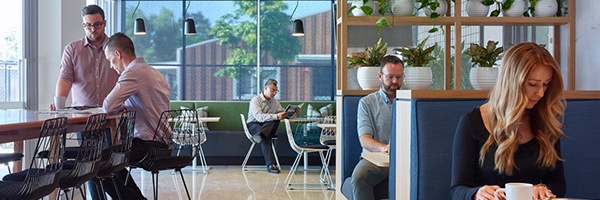
Overall there is a growing trend to create more holistic experiences for staff, and the lines between work and home are now blurred. More and more we’re seeing offices take on a hotel ambiance with casual meeting areas that give a more human experience. Read more on workplaces with a hotel ambiance here >
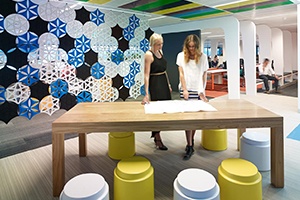
ABW or Agile Workplaces
Our designers have seen a rise in the demand for agile or Activity Based Working (ABW) environments – non-allocated seating, personal lockers, and specific zones such as quiet areas and open collaboration areas for project work.
The above shifts in modern office design are being driven by five generations now in the workforce and companies needing to cater to all work styles (both introvert and extrovert) along with a greater need for cost efficiencies.
Multiple Collaboration Areas
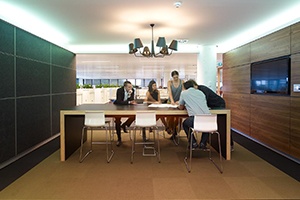
Collaboration spaces aren’t just about a few comfy chairs in the corner; now it’s about offering numerous areas where people can come together to work and often include technology to support collaboration such as screens, Wi-Fi or whiteboards.
The need for cost efficiencies and advances in mobile connectivity has also seen a rise in unique spaces within the office utilised as quiet zones for concentrated work, e.g. under stairs or corridors.

Open plan offices are also seeing a shift in that companies want a completely open environment where clients can see staff working and collaborating and immerse themselves in the office buzz.
Our team has also seen a greater need for furniture that is adaptable so that it can be easily reconfigured depending on the workplace requirements.
Technology

Open collaboration areas, quiet zones and adaptable workspaces are all possible thanks to mobile connectivity and advances in technology. With artificial intelligence, virtual reality and augmented reality technologies becoming mainstream we will see these technologies become part of everyday work-life.
With any workplace design, it’s essential to incorporate the latest technologies and plan for future changes. An example of preparing for future changes is to use a design that’s a mix of static and Activity Based Working but has the option to change to an agile workplace if required.
Other options to be aware of include:
- Lighting
- Temperature control
- Apps to assist with diary management and seating allocations
- Facial recognition
Read more about how artificial intelligence, virtual reality and augmented reality technologies can improve your workplace design on our blog, ‘Is your office design ready for artificial intelligence?’
 Biophilia
Biophilia
As more organisations focus on employee well-being biophilia will likely become a standard workplace phrase. The Cambridge dictionary defines biophilia as a: love of living things and nature, which some people believe humans are born with: biophilia, the inborn affinity human beings have for other forms of life.
Biophilia in workplace design translates to:
- Access to natural light
- Access to a variety of spaces
- Use of plants
- Use of colour
- Use of natural elements
- And if you’re lucky enough – access to the outdoors. (balconies, roof tops etc)
A study by Human Spaces found that, from a sample of 7,600 workers across 16 countries, people working in offices offering natural features had a 15% higher sense of well-being and were 6% more productive.2
Natural Textures & Materials
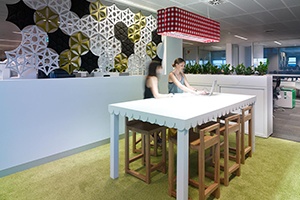
One of the latest office design trends incorporates natural elements such as wood, stone, marble, metal and granite as part of a biophilic design not only helps employee’s well-being and has links to increased productivity, it also reinforces the current trend of blurring the lines between home and workplace interior design. Adding a range of materials with different textures and colours such as wood and stone creates a less sterile environment, which employees will be happy to spend time within.
Natural Light
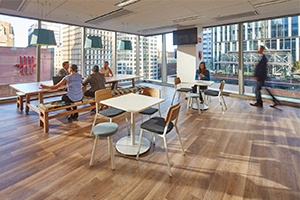
It’s no surprise and not a new phenomenon that natural light can boost energy and keep employees alert. However, it’s not always possible for all employees to have a window seat and direct access to natural light.
‘A study from Northwestern Medicine and the University of Illinois at Urbana-Champaign reports that office workers with more light exposure at the office had longer sleep duration, better sleep quality, more physical activity and better quality of life compared to office workers with less light exposure in the workplace.’3
For those without access to natural light, an Italian company, CoeLux, has created a lighting system that mimics natural sunlight and colour temperature. The LED light is said to be indistinguishable from natural light for humans, cameras and computers. As technology advances hopefully, availability will increase, and prices will decrease.4 (currently, it’s said to cost anywhere up to $68,000 per installation.)
Air quality
Whether incorporating a green wall or a few individual plants, the benefits of having plant life in a work environment include better air quality through increased oxygen levels. In turn, this reduces mental fatigue and improves concentration levels.
Employee Well-being

As there is now a greater emphasis on employee well-being, office design will continue to offer multiple collaboration areas, relaxation areas and areas for concentrated work. Just as landlords of commercial buildings are now offering luxury end of trip facilities including gyms and change rooms with Dyson hairdryers to attract tenants in a competitive market, employers will also provide a range of benefits as a way to attract and retain the best talent.
The critical factor when incorporating employee wellness into your workplace design is to gather data to formulate a strategy identifying what employees are looking for and then measure success against productivity and absenteeism levels. It’s not enough to build a yoga or relaxation room – organisations need to monitor usage and ensure employees are happy with the facilities and programs offered.
Interesting facts on employee well-being:
‘Research on the economic impact of well-being found that thriving employees have 41% lower health costs ... And 35% lower turnover costs.'5
'Researchers found that happy employees have, on average, 31% higher productivity and 37% higher sales, while their creativity is three times higher.'6
‘Workplace stress is estimated to cost US employers more than US$300 billion per year in health care cost, missed work, and stress-related turnover.’7
While we can never claim to predict the next big thing in workplace design, we can say from our experience that commercial designs should reflect an organisation’s brand and values, plus offer employees a range of benefits. With benefits such as biophilic design, the latest technology and multiple collaboration areas, organisations will be well placed to achieve an environment with engaged employees.
If you are considering a new workplace design or would like further information, please don’t hesitate to contact PCG. We've also included our free whitepaper, 'Is Your Workplace an Asset or Liability?'
You May Also Like:
- Check In and Check Out Where Workplace Design is Headed
- Why a Workplace Needs Analysis is Vital
- Why An Open Plan Office Design Isn’t Enough
Acknowledgements:
1. The McKinsey Global Institute, ‘The social economy: Unlocking value and productivity through social technologies.’ Viewed April 2018
2. PR Newswire, ‘Global study connects levels of employee productivity and wellbeing to office design.’ Viewed April 2018
3. Huffington Post UK Edition, ‘Windowless office health damage.’ Viewed April 2018
4. SmartNews, ‘Led Skylights perfectly mimic natural sunlight.’ Viewed April 2018
5. Gallup Press, ‘The Economics of Wellbeing.’ San Francisco, CA: 2014. Viewed April 2018
6. Psychological Bulletin, ‘The Benefits of Frequent Positive Affect: Does Happiness Lead to Success’, Volume 131, Issue 6. Viewed April 2018
7. Psychological Bulletin, ‘The Benefits of Frequent Positive Affect: Does Happiness Lead to Success’, Volume 131, Issue 6. Viewed April 2018

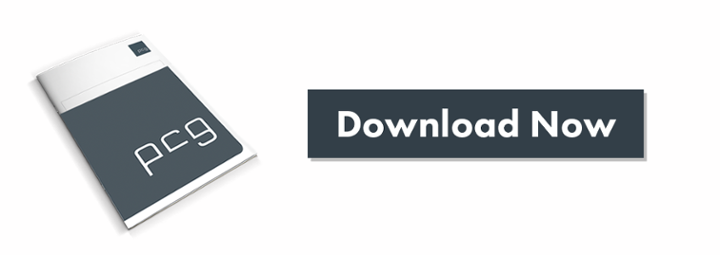







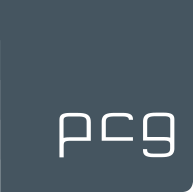
Share your thoughts